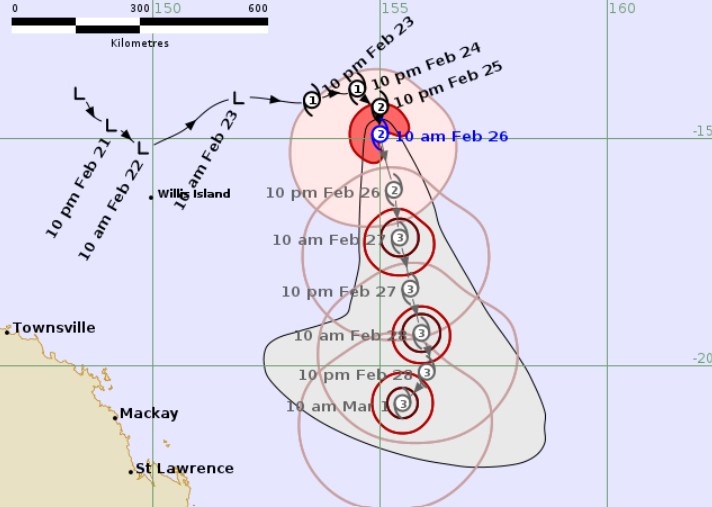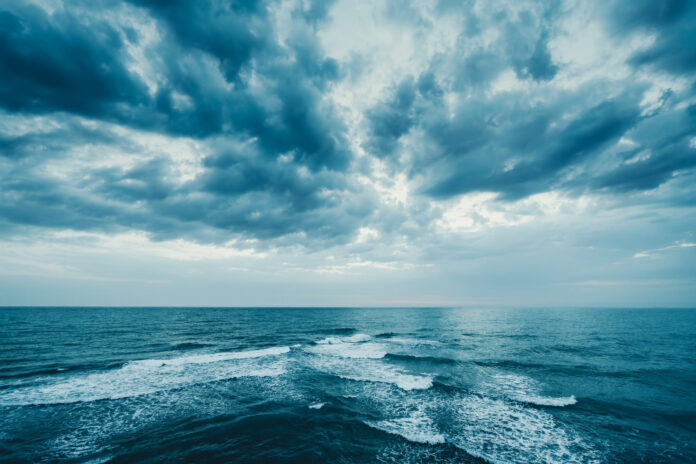A cyclone looming off Australia may impact a rain-hit state still enduring “pain and suffering” from recent flooding.
Cyclone Alfred is yet to make its presence felt as it hovers off Queensland, with only strong winds and isolated showers set to impact coastal regions.
But communities are sweating on the category two system’s progress, with a tracking model predicting a direct hit on central Queensland in the coming days.
Cyclone Alfred is about 900km off Mackay and set to develop into a category three system by Thursday morning.
“This system is organised and the environment is conducive for further development,” the Bureau of Meteorology’s Dean Narramore said.
Want more free local news? Follow Sunshine Coast News on Facebook, LinkedIn and Instagram, and sign up for our FREE daily news email.
It is set to remain a category three system “well off” the Queensland coast through to Friday, with a range of scenarios possible from the weekend.
The bureau’s official forecast track looks four days ahead, predicting a chance of Cyclone Alfred moving closer to Queensland and increasing winds and rainfall for coastal communities.
In another potential scenario, the system moves further south parallel to the Queensland coast into early next week.
Cyclone Alfred may also pull further way from the coast in the coming days, the bureau said.

“From the weekend … there is the risk that Alfred may move closer to the central or southern Queensland coast,” a bureau warning said.
Another weather model that can predict up to 15 days ahead indicated Alfred may turn towards a highly populated Queensland coastal region.
Considered one of the world’s best, the European Centre for Medium-Range Weather Forecasts indicated the cyclone may impact central Queensland’s coast by Tuesday.
The forecast for the Sunshine Coast includes south-easterly winds of up to 35kmh and a high chance of showers from Sunday.
A cyclone would be another blow for Queensland as it recovers from widespread flooding.
Recovery efforts are under way in the state’s north after record-breaking February rainfall triggered floods that claimed two lives and forced hundreds to evacuate.
“There is a level of pain and suffering in the north and far north that I have never seen before,” Queensland Premier David Crisafulli said in Ingham on Wednesday.
As residents clean up, a “very alarming” rise in a deadly disease linked with heavy rain – melioidosis – has been detected in the north.
There have been nine deaths and 53 cases in Cairns since January, with another three fatalities in Townsville.
“It’s startling. When you have tight knit communities like those in the north and far north, those deaths … rock communities,” the premier said.
“The region has been through so much, and then to have loss of life following the flooding … it just makes it a double blow.”
Melioidosis is a wet season disease spread through contact with contaminated water, soil and air.
Meanwhile, another 24 communities in the Burdekin and Townsville regions are eligible for state-federal government disaster recovery payments after being hit hard by February’s flooding.
A package with grants up to $10,000 are available for the flood-hit north “to build resilience into people’s homes”, Mr Crisafulli said.
“It’s about making sure that communities can withstand what Mother Nature throws at them,” he said.





